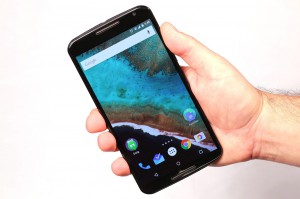Lyate
Color’s attempt to tackle at-home cancer testing on the cheap
In this article by Kara Swisher of Re/code, Color, a new at-home breast and ovarian cancer-risk screening company, is at the center of attention. The company produces $249 physician-ordered kits that screen genes that may show early mutations that lead to breast or ovarian cancers. In short, a woman orders a kit, a licensed physician reviews the order and dispatches the kit to the person’s home, a saliva sample is collected and the results are posted to a secure online portal after processing for the woman to review. The company even offers free genetic counseling so the user can better understand what the results mean. Swisher discusses how the company recently secured $15 million in funding for its venture and how the funds aim to boost Color’s growth and get the kits in the hands of more women. I think this is an awesome–and affordable–idea. I also think “minute clinics” and family doctors are going to be disrupted by this new innovation. Because women can order the kit and get the test right in their home, it takes the doctor “middleman” out of the equation, making the entire process less painful. Additionally, because this kit tests genetics, something that isn’t usually done in a doctor’s office or clinic, there is opportunity for a more robust and holistic view of the user’s health–ultimately and hopefully helping them avoid cancer altogether. I think there might be a security risk (someday) with sending genetic information through the mail, having it posted online, etc.–but when you think about it, I’m not sure there is any real value in someone stealing your cancer-risk data. So, for now, I see that as a non-issue. What do you think? Do the benefits outweigh the risks? Would you buy one of the kits?
Nailing the group presentation
 In this article by Mark Suster, an entrepreneur, tips on how to “not suck” at presenting to a group/large audience are discussed. A few of the points stood out to me and I think they really apply for our final presentations on May 4.
In this article by Mark Suster, an entrepreneur, tips on how to “not suck” at presenting to a group/large audience are discussed. A few of the points stood out to me and I think they really apply for our final presentations on May 4.
- “Show some energy!” Mark encourages presenters to jump boldly out of their comfort zones–as everyone in the audience has a mobile device or laptop just waiting to be used if attention is lost. He makes the point that it’s really important to project, use hand motions and “interact” with the audience in a “loud, evocative and compelling” way.
- “Tell a story.” Mark encourages presenters to tell a story if a demo is used in their “pitch” to the audience. Rather than highlighting points like how users input data or sign up for the platform, Mark encourages presenters to tell a story about how the app/demo is applicable in real life. I think this is key for our presentations, as we’re all trying to convince a large, diverse group that our app can add value to their lives.
- “Make it visual.” Mark discusses how he usually creates two decks when giving a presentation: 1 with high-level stats and lots of valuable pictures/graphs/charts/etc. and 1 full of the “meat” that he sends to his audience after a presentation. I think this is similar to what we’re doing with our presentations– 1 “pretty” deck that covers high-level information about our projects, and a community site where we post all of the “nitty gritty” details for viewing after the presentation. I think this is the best practice because it gives people the general idea of what you’re talking about without making them “think” too much–and gives them the ability to investigate further if they’re so inclined. And that’s key.
Do you agree with Mark’s points? I do. I think they’re pretty much “common sense” things that everybody knows–but many of us rarely practice them in our actual presentations due to nerves, grades, etc. Is there anything you’d add beyond what Mark discusses?
Look out Verizon and AT&T– there’s a new kid in town.
For years, there have been rumors of a brand new wireless carrier jumping into the ring currently occupied by the “Big 4” (Verizon, AT&T, T-Mobile and Sprint) in the United States–and according to this post by The Wall Street Journal, Google will finally confirm that it’s throwing its hat into the ring as early as tomorrow. According to the article, Google has “teamed up” with Sprint and T-Mobile to give its Nexus 6 users (initially) the choice of using Google as their carrier, rather than one of the “Big 4.” By doing so, Google will only charge customers for the data they use per month, as the average American leaves around $28 of unused data on the table each month in the current environment. I think this is a great move for Google, and gives customers more choice when choosing a wireless carrier that offers the most value for them. Because of the Nexus 6’s hardware, it can switch between the T-Mobile GSM network and the Sprint CDMA network (and both carrier’s 4G LTE networks) to give users the best coverage possible wherever they go. I think the key takeaway is that Google is trying to make data connectivity and Internet access more efficient, cheaper, and more accessible to more people–and that’s a good thing. While I think it’s obvious that Verizon and AT&T are the target for this initiative and will probably be disrupted, I also think cable providers like CenturyLink, Verizon FiOS and Time Warner Cable will also be affected. If mobile data continues to get cheaper and cheaper, people may rely less on their home-based internet connections to connect to the web, or they may drop cable TV completely in order to stream on the go with their cell-tower-connected devices. Are there other industries that might be disrupted? Would you switch to Google if you had a Nexus 6–or if they eventually made the service available to iPhones and other non-Nexus 6 devices?
Fossil-free fuel from carbon dioxide? Check.
Bear with me–this is another Audi-related post. However, it’s about what fuels the cars on our roads rather than Audi’s autonomous driving innovations. In a press release by Volkswagen AG, Audi announced today that they have successfully produced their first batch of e-diesel and it has been put to use in Germany’s Federal Minister of Education and Research, Dr. Johanna Wanka’s, government-issued Audi A8 TDI. That’s great–but what does the term “e-diesel” even mean? E-diesel is a type of fuel researched heavily by Audi that is synthesized from existing atmospheric carbon dioxide, water and electricity from wind and solar sources. In short, there are no fossil fuels of any type used in the production of Audi’s e-diesel. When I read this, I began thinking of ramifications for other industries that e-diesel (once it’s ready for mass consumption) might disrupt. First, and most obviously, fossil fuel and oil giants like BP and Shell will surely try to squash this new eco-friendly superfuel because it doesn’t need any input from their giant conglomerates to power millions of diesel cars around the world. Next, I think government’s will be disrupted because of new testing that will be necessary, tax credits that might incentivize the use of e-diesel that will need to be rolled out, etc. Can you think of any other industries that might be disrupted by Audi’s innovative new fuel? Are their applications other than automobiles that the fuel might excel in?
Delphi’s Autonomous Audi — Is the future within reach?
In this article by Car and Driver, Delphi, a car tech company that recently finished the first cross-country autonomous rode trip using a specialized Audi SQ5 is on display. The Audi, which was fitted with a variety of Delphi tech and a wild paint job, traveled over 3,400 miles and drove itself for 99% of the time, according to the company. That means that only approximately 35 miles out of an entire coast-to-coast road trip were controlled by a human. However, aside from the…unique…exterior color scheme, there were very few cues to tip anyone off that this is a self-driving car. This proof-of-concept Audi shows that driverless tech is, in my opinion, on the verge of mass deployment in the automotive industry. I think this tech will eventually disrupt existing insurance underwriting practices and government regulations the most. For insurance companies, a variety of parameters for how premiums are assessed (driver experience, age, etc.) will have to be reexamined in the wake of this new autonomous tech, potentially altering their bottom line. Do you think there are industries that will be disrupted in different ways?
Tesla’s New Venture — Home Batteries?

Tesla CEO Elon Musk tweeted today “Major new Tesla product line — not a car — will be unveiled at our Hawthorne Design Studio on Thurs 8pm, April 30″ and these few simple words have sent the media into a tizzy. What will it be? What does the mad genius have up his sleeve? Apparently, according to many outlets and this article, Musk & Co. are working on a home battery solution that can power all of your home electricity needs for a set period of time–all the while interfacing with SolarCity’s (of which Musk is Chairman) solar solutions to provide “free” electricity in perpetuity. I think it’s a great idea that offers a definitive value proposition. If they can get the launch right, and the cost low, I think it’ll reach many millions of households over the next decade. I think this home solution aims to disrupt the “commodity” status that power delivery companies have fallen into, and I can see this spurring some much needed innovation in the marketplace. What ramifications do you think this will have on power companies and their strategy moving forward? Do you see companies like PECO partnering with Tesla to provide these packs as a supplement rather than a “whole home” solution?
Collaboration and Disruptive Innovation
In this article by Vikram Jandhyala and Will Ludlam of the Seattle Times, the role of collaboration in disruptive innovation is investigated. The authors argue that without collaboration, people become frightened by how quickly things are changing–largely due to the fact that they are not included in the development of new innovations. Jandhyala and Ludlam argue that, using Washington State as an example, universities, businesses, media outlets, government agencies, etc. should work together to draw talent into the region and promote collaborative innovation. The authors argue that through collaboration, “disruption” will become “evolution,” in which all interested parties have a say in how to move forward and will be less caught up in the fast pace of change.
Do you think that by “forcing” disruptive innovation the value will be diminished? For example, instead of allowing disruptive innovation to “come about” naturally and without the use of a think tank or incubator, are the innovations are more meaningful? What challenges do you see in drawing talent to a particular region, business or university?






